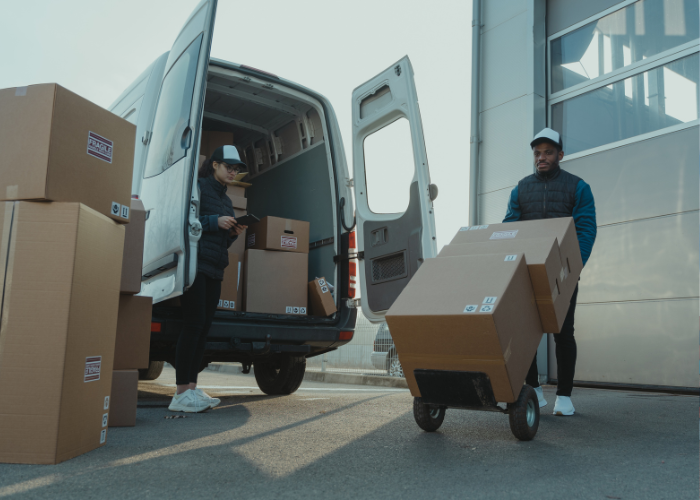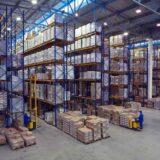Sustainability in Logistics: How Green Warehousing Makes a Difference
May 20, 2024 0Sustainability & Green Logistics
As businesses continue to prioritize environmental responsibility, the logistics industry is increasingly adopting sustainable practices to reduce its carbon footprint. One of the most impactful changes has been the shift toward green warehousing. At Logix Across, we are committed to sustainability and believe that adopting eco-friendly practices in warehousing can make a significant difference in both the environment and a company’s bottom line.
What is Green Warehousing?
Green warehousing refers to the implementation of environmentally friendly practices in warehouse operations. It includes a variety of strategies aimed at reducing energy consumption, minimizing waste, and lowering the overall environmental impact of warehouse facilities. Green warehouses are designed to be more energy-efficient, utilize sustainable materials, and promote responsible management of resources.
Key Components of Green Warehousing
1. Energy Efficiency
One of the primary goals of green warehousing is to reduce energy usage. This can be achieved through a variety of methods:
- LED Lighting: Replacing traditional lighting with energy-efficient LED lights significantly reduces electricity consumption.
- Solar Panels: Many green warehouses now incorporate solar panels on their roofs, generating renewable energy and reducing reliance on grid power.
- Energy-Efficient Heating and Cooling Systems: Advanced climate control systems, such as high-efficiency HVAC systems, minimize energy waste and provide consistent temperature regulation with less energy consumption.
2. Sustainable Materials and Building Design
Sustainable warehouses are built with eco-friendly materials and smart design principles. These facilities often feature:
- Recycled and Locally Sourced Materials: Warehouses are built using recycled steel, wood, and other sustainable materials, helping to reduce the environmental impact of construction.
- Green Roofing: Some green warehouses use green roofs, which not only help with insulation but also reduce stormwater runoff and promote biodiversity.
- Natural Ventilation: Designed with large windows and strategic openings, green warehouses maximize natural light and ventilation, reducing the need for artificial lighting and HVAC systems.
3. Waste Reduction and Recycling
Green warehousing goes beyond just energy efficiency—it also focuses on minimizing waste and improving recycling efforts. Practices like:
- Waste Segregation: Waste materials such as paper, plastic, and cardboard are separated for recycling, reducing the amount of waste sent to landfills.
- Reusable Packaging: Many green warehouses encourage the use of reusable packaging materials to reduce waste in the supply chain.
- Composting: In warehouses that handle food products or perishables, composting programs help divert organic waste from landfills and return valuable nutrients to the soil.
4. Electric and Low-Emission Equipment
To reduce the carbon footprint of transportation and in-warehouse operations, green warehouses often utilize electric-powered or low-emission equipment:
- Electric Forklifts: These environmentally friendly vehicles reduce the use of fossil fuels and lower emissions within the warehouse.
- Electric Charging Stations: Charging stations for electric vehicles (EVs) within the warehouse property help support sustainable delivery methods, such as electric trucks.
5. Sustainable Water Management
Water conservation is another important aspect of green warehousing. Some green warehouses implement:
- Rainwater Harvesting Systems: Collecting rainwater for use in irrigation or even for washing purposes helps reduce reliance on municipal water systems.
- Water-Efficient Fixtures: Low-flow faucets, toilets, and irrigation systems ensure that water usage is minimized throughout the facility.
How Green Warehousing Benefits Businesses and the Environment
The shift to sustainable warehousing has significant benefits, both environmentally and economically.
1. Cost Savings:
While the upfront investment in green technology and infrastructure can be significant, the long-term savings are substantial. Energy-efficient lighting, solar power, and water conservation reduce utility bills, while waste reduction programs lower disposal costs. Over time, these savings can offset initial investments and provide a strong return on investment (ROI).
2. Enhanced Brand Image and Consumer Trust:
Consumers are increasingly looking for brands that are committed to sustainability. By adopting green warehousing practices, businesses demonstrate their dedication to reducing their environmental impact, which enhances their reputation and builds consumer trust.
3. Compliance with Regulations:
With increasing government regulations around environmental sustainability, green warehousing ensures compliance with laws and policies aimed at reducing carbon emissions, waste, and pollution. This proactive approach reduces the risk of fines or penalties and ensures that businesses stay ahead of future regulations.
4. Reduced Environmental Impact:
The most significant benefit of green warehousing is its positive impact on the environment. By reducing energy consumption, minimizing waste, and lowering carbon emissions, businesses can contribute to a cleaner, more sustainable future.
5. Improved Employee Well-being:
Green warehouses are often healthier work environments. With better air quality, natural lighting, and energy-efficient systems, employees work in more comfortable and sustainable conditions, boosting morale and productivity.
Logix Across’ Commitment to Sustainability
At Logix Across, we are dedicated to creating sustainable logistics solutions for our clients. As part of our commitment to green logistics, we have integrated green warehousing practices into our operations, offering eco-friendly solutions that not only help businesses reduce their environmental footprint but also enhance operational efficiency.
- Energy-Efficient Warehouses: Our facilities use solar panels, LED lighting, and advanced climate control systems to minimize energy usage and lower operating costs.
- Zero-Waste Initiatives: We aim for zero waste in our warehouses by implementing comprehensive recycling programs and reducing packaging waste.
- Sustainable Partnerships: We work with environmentally responsible carriers and suppliers to ensure that every part of the logistics process aligns with our sustainability goals.
Start Your Green Logistics Journey with Logix Across
Adopting green warehousing practices is more than just an environmental trend—it’s a smart business decision that can lead to long-term cost savings, improved brand reputation, and a smaller environmental footprint. By partnering with Logix Across, you can incorporate sustainable solutions into your supply chain and take the first step toward a more eco-friendly future.
Contact us today to learn more about our green warehousing solutions and how they can benefit your business. Let’s work together to build a more sustainable and efficient supply chain.











